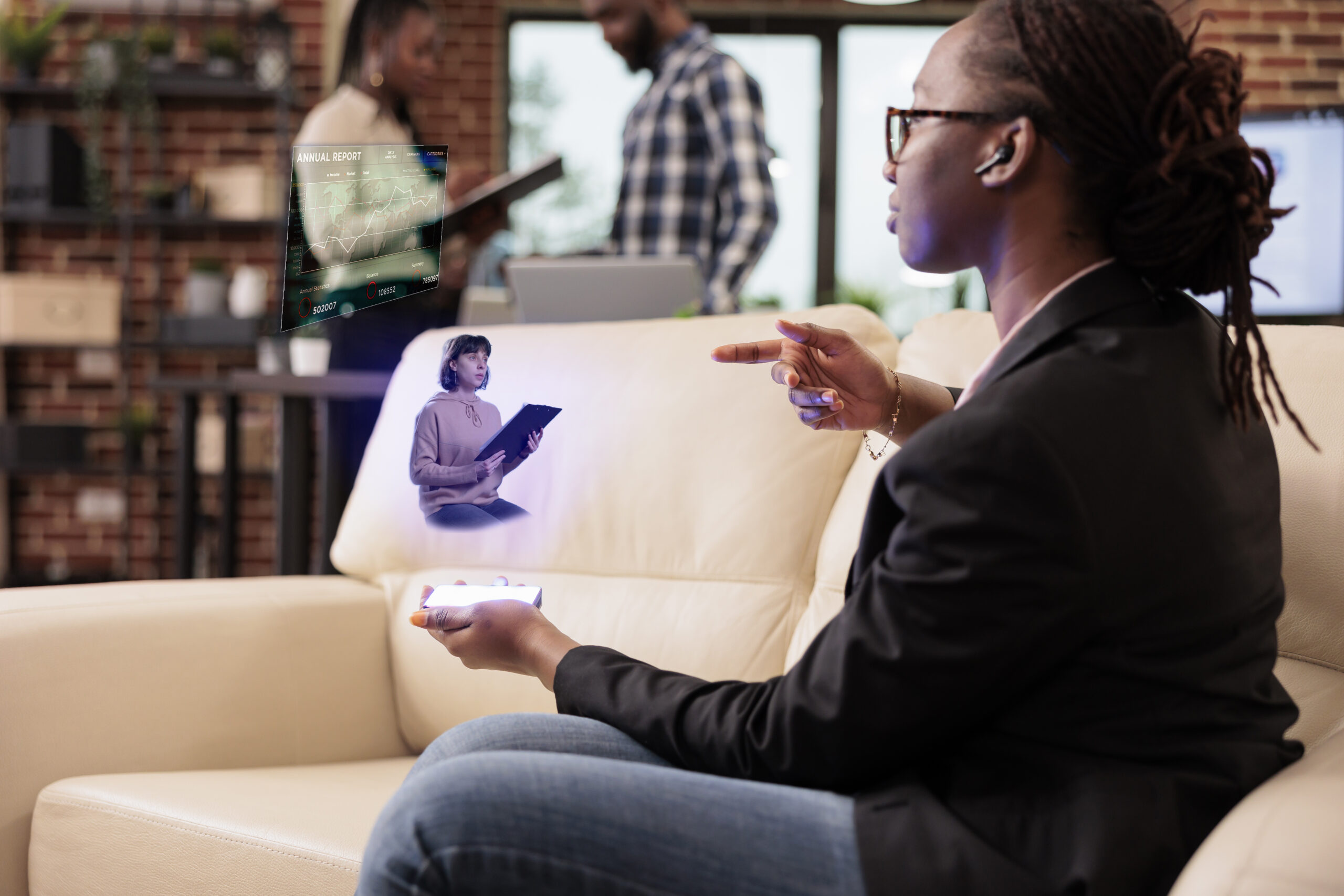MR, AR, VR, XR; a variety of new imaging technologies are being developed, but have you ever thought that they are all similar and indistinguishable?
Many of you may have that feeling. In this article, we will explain one of these technologies, MR.
What is MR
MR stands for Mixed Reality and is one of the XR technologies that have attracted attention recently. By combining the real world with a virtual world represented by computer graphics, etc., a new world can be created and presented to the user.
Hearing this explanation, some may wonder what the difference is between AR and MR. MR is characterized by the fact that, in addition to the elements of AR, it recognizes the shape, size, and position of objects in the real world, such as a room or a table, and superimposes a drawing of the virtual world on them. The virtual object can also be manipulated. In other words, this technology combines the real and virtual worlds more than AR. By using a special MR device, such as an MR lens, to view and manipulate this composite image, it is possible to experience objects in the virtual world as if they were real.
Examples of MR Applications
Microsoft HoloLens is a glasses-like device developed by Microsoft Corporation that allows wearers to manipulate objects in the virtual world that appear in the real world as if they were wearing glasses by projecting objects in the virtual world onto a special lens that allows direct viewing of the real world.
There are also examples of VR goggles with MR functionality. Oculus (Meta) Quest 2, sold by Meta, has released an application that allows users to experience MR using a pass-through camera installed to track the position of the person wearing the goggles. The pass-through camera captures images in black and white, so it cannot fully recognize the real world, but this is also a simplified MR feature.
The Future of MR
Although this product is currently only for developers, if it can be produced at a low cost, it will be possible to improve work efficiency by allowing all conference participants to hold meetings while viewing stereoscopic images through the device or reading instruction manuals that float in the air. Since the device can recognize the shape and coordinates of objects in the real world, its applications are expected to extend beyond the desktop to include manufacturing, medicine, entertainment and sports.
As technology advances, components will become smaller and smaller. As the development of smart contact lenses, AR devices in the form of contact lenses, is already underway, it is expected that MR will also become smaller and less cumbersome for the user.
Furthermore, technology is being developed at the University of Massachusetts, Amherst, USA, to generate electricity from protein and air. By combining these technologies, the day may not be far off when smart contact lenses that do not need to be recharged will be available. While there are still issues to be addressed, such as cost reduction and physical safety, it is not difficult to imagine a future in which small MR devices become an indispensable part of daily life, just as smartphones have become ubiquitous around the world.
